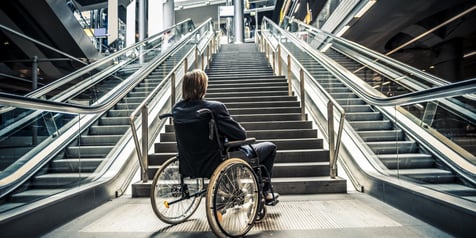Foot Drop
Join Our Movement
What started as an idea has become a national movement. With your support, we can influence policy and inspire lasting change.
Become an Advocate
f foot drop is from a positioning issue without nerve damage or trauma, you will be instructed to stop that behavior. Do not let your legs press up against anything. Stop crossing your legs. Sometimes people feel their legs ‘go to sleep’ when crossed. This is the peroneal nerve telling you it is compressed. Support for your feet if you sit with your legs elevated. Look at how your body is positioned in bed to be sure the sheets are not tucked in too tightly, drawing your feet down when on your back. A blanket lifter will keep the sheets off your feet while still keeping them warm. Obtain ankle supports (usually heel protectors) when in bed.
Pain medication can be used to assist if the pain is an issue. If your pain is muscular, analgesics or nonsteroidal inflammatory (NSAIDS) will be ordered. If pain is from nerve issues, medications that particularly have an effect on nerve pain, such as antidepressants or anticonvulsants in low doses or gabapentin or pregabalin, are effective. Topical medications or those rubbed on the skin, such as capsaicin, might also be helpful.
An ankle-foot orthotic (AFO) will assist in keeping the toes in position for walking and positioning. These are plastic supports that fit along the back of the leg, down around the heel and along the bottom of the foot. A soft Velcro strap holds the splint around the calf while a supportive shoe holds it in place on the bottom of the foot. Some individuals find this cumbersome. There is a less rigid device that is a Velcro strap around the ankle that ties to your shoelaces allowing your shoe to support your foot. These pictures are the two orthotics randomly selected for you to see the devices.
Physical therapy will be ordered to improve your muscle strength and balance. Exercises will be provided that may include passive motion, isometric, stretching, use of elastic bands, and ankle weights. More strengthening further up the leg is also helpful.
Electrical stimulation is offered to some individuals. This is a small device that stimulates the peroneal nerve to hold the foot in an upright position. It keeps the foot at a 90-degree angle when walking. A therapist may also use e-stim to strengthen muscles and nerves as a treatment.
Surgery may be offered to release a compressed nerve or remove something pressing against the nerve. In some cases, nerves can be transferred from one area to another to recreate your function. Nerves recover at a rate of one inch per month. Therefore, if your injury is behind your knee, measure from there to your toes. How long this space is on your body in inches will be the number of months until the nerve has regenerated. If the issue is in your back, it will be longer as you will measure from the spot on your back to your toes. It takes a long time to regenerate a nerve.
Other surgical options that may assist in your recovery are tendon transfers, moving muscles for strength or fusing the ankle. Tendon lengthening can help if your Achilles tendon has shortened over time.
The good news about foot drop is that there is an abundance of treatments that can help you. It can be daunting, but there are options. Nurse Linda
Pediatric Consideration:
In young children, sometimes paraffin treatments are recommended to help a range of motion loosen joints. In this case, the therapist will instruct you on the correct procedure. Do not try this at home as done incorrectly or for the wrong condition. More damage can occur. In this treatment, a sock is placed on the foot for protection. Slightly warm paraffin is then applied to the sock. This gently loosens the ankle joint. Burning skin is a real complication, so be sure this is done only by an educated therapist or with extensive education yourself.
Provide your child with good positioning to avoid drop foot. Check equipment to ensure it is still appropriately working for your growing child. While you are looking, check the toes of shoes to make sure they still fit. Shoes too small do not create foot drop but are a common issue with children of all ages, so checking is important.
